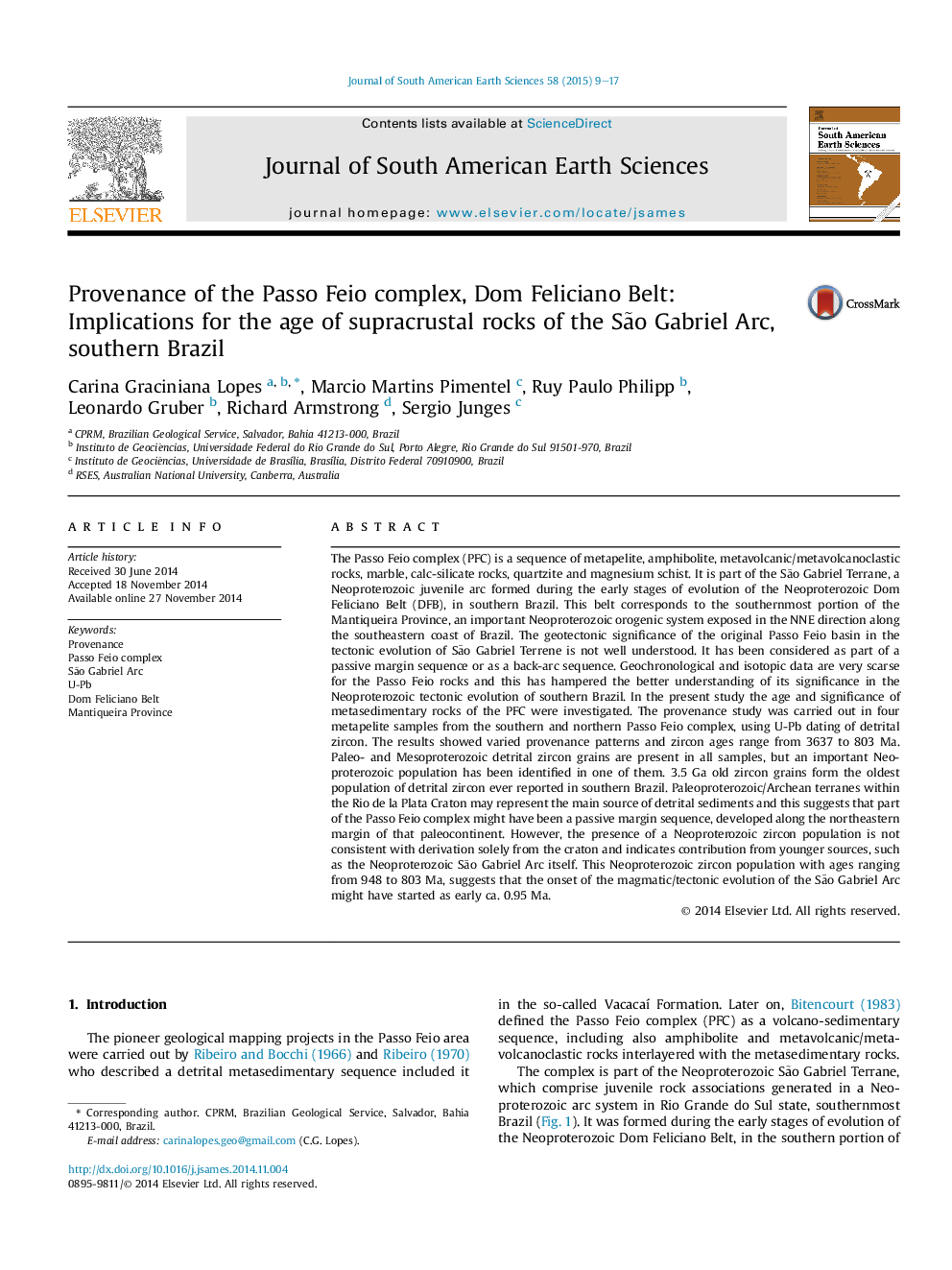| Article ID | Journal | Published Year | Pages | File Type |
|---|---|---|---|---|
| 4682256 | Journal of South American Earth Sciences | 2015 | 9 Pages |
•Two depositional sequences were proposed to Passo Feio Complex: passive margin and syn-orogenic basin.•U-Pb analyzes indicate a maximum age of deposition for this basin at ca. 774 Ma.•An extension of the onset age of tectonic evolution of São Gabriel Arc was suggested to 948 Ma.•Paleoarchean zircon population (3.6 Ga) were found in the Passo Feio samples.
The Passo Feio complex (PFC) is a sequence of metapelite, amphibolite, metavolcanic/metavolcanoclastic rocks, marble, calc-silicate rocks, quartzite and magnesium schist. It is part of the São Gabriel Terrane, a Neoproterozoic juvenile arc formed during the early stages of evolution of the Neoproterozoic Dom Feliciano Belt (DFB), in southern Brazil. This belt corresponds to the southernmost portion of the Mantiqueira Province, an important Neoproterozoic orogenic system exposed in the NNE direction along the southeastern coast of Brazil. The geotectonic significance of the original Passo Feio basin in the tectonic evolution of São Gabriel Terrene is not well understood. It has been considered as part of a passive margin sequence or as a back-arc sequence. Geochronological and isotopic data are very scarse for the Passo Feio rocks and this has hampered the better understanding of its significance in the Neoproterozoic tectonic evolution of southern Brazil. In the present study the age and significance of metasedimentary rocks of the PFC were investigated. The provenance study was carried out in four metapelite samples from the southern and northern Passo Feio complex, using U-Pb dating of detrital zircon. The results showed varied provenance patterns and zircon ages range from 3637 to 803 Ma. Paleo- and Mesoproterozoic detrital zircon grains are present in all samples, but an important Neoproterozoic population has been identified in one of them. 3.5 Ga old zircon grains form the oldest population of detrital zircon ever reported in southern Brazil. Paleoproterozoic/Archean terranes within the Rio de la Plata Craton may represent the main source of detrital sediments and this suggests that part of the Passo Feio complex might have been a passive margin sequence, developed along the northeastern margin of that paleocontinent. However, the presence of a Neoproterozoic zircon population is not consistent with derivation solely from the craton and indicates contribution from younger sources, such as the Neoproterozoic São Gabriel Arc itself. This Neoproterozoic zircon population with ages ranging from 948 to 803 Ma, suggests that the onset of the magmatic/tectonic evolution of the São Gabriel Arc might have started as early ca. 0.95 Ma.
